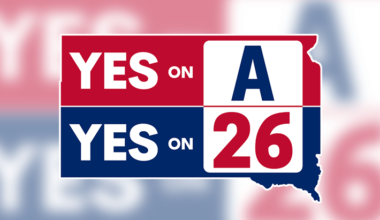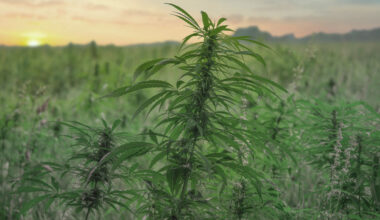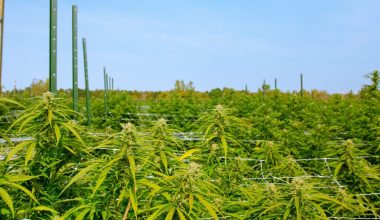Image Source: https://unsplash.com/photos/NoXi8qxAHOU
Powder season is on its way to many places across the country, and with the chillier weather often comes winter and, for some, chronic pain. To avoid pain, traditional pain medications such as over-the-counter (OTC’S), NSAIDs (nonsteroidal anti-inflammatory drugs), and even opiates are often prescribed to manage chronic pain and relieve anxiety and other related symptoms as recovering from injuries from long days out in the backcountry.
Snowboarding and skiing can take a physical toll on the body resulting in boot-induced pain, wipeout bruises, achy knees, and sore quad muscles.
Fortunately, we’re living in a time where increasingly more alternative options are becoming available to provide pain or anxiety relief. Say hello to CBD.
Cannabidiol, or CBD, has officially hit the mainstream, yet there’s still little information and plenty of mystery surrounding the substance, with many still associating CBD with THC and marijuana.
Cannabidiol is one of over 100 chemical compounds found in the cannabis plant. The other compound found in the same plant and often interchangeably used for CBD is THC, the psychoactive compound famous for its psychoactive effects. Unlike THC, CBD does not share the same psychoactive effects as THC, and its products are often listed as “hemp-derived.”
Back to our back pain, CBD has been shown to mitigate the discomfort while you recover. Research shows that Cannabidiol has the potential to reduce pain and inflammation, which are common complaints that winter sports enthusiasts must deal with every season.
CBD’s therapeutic benefits
Instead of being consumed recreationally, Organic CBD Nugs is touted for its many therapeutic benefits and is used for medicinal purposes. Cannabidiol is known for its potential to naturally provide relief in both the mind and the body without the negative side effects you encounter in most pharmaceuticals.
Best of all, CBD is completely legal for consumption in over 50 states because it doesn’t produce any psychoactivity (the high). Cannabidiol has also been shown to address the following:
- Relieve anxiety
- Prevents muscle spasms
- Reduce pain
- Boosts appetite
- Prevents the development and spread of bacterial growth
- Reduces vomiting and nausea
- Promotes bone growth
- Improves skin conditions, including chronic acne and psoriasis
- Reduces inflammation
- Normalizes blood sugar levels
How can CBD provide skiers pain relief?
Traditionally cannabis has been used to treat pain and relax after a long and cold day on the slopes. However, some snowboarders and skiers would rather dodge the unwanted side effects of THC. Products high in THC can lead to (depending on your experience) unpleasant side effects such as anxiety, paranoia, and fierce food cravings. More often than not, food cravings caused by THC can be an unwanted challenge for winter athletes on a performance diet. Like it or not, it takes a lot of mental strength to resist all the goodies in the ski resort lodge.
Luckily, we have access to strains of cannabis that are meant to be rich in Cannabidiol (CBD) and very low in Tetrahydrocannabinol (THC). Many mountain adventurers are discovering they enjoy the benefits of high-CBD cannabis products. In fact, CBD has significant anti-anxiety effects and does not cause munchies. Cannabidiol-rich strains can help with all types of musculoskeletal complaints: muscle stiffness, joint pain, and inflammation. It can be a very comforting tool to have while on a ski trip in an unfamiliar place. Choosing to relax and recover with CBD means you get all the same benefits of traditional cannabis without the negative psychoactive effects.
Is there scientific proof?
While hundreds of users and certified trainers’ anecdotal experiences with CBD are intriguing, you might remain skeptical. Maybe the scientific findings will crush some of your CBDoubts.
According to a 2018 study published in Frontiers in Neurology, Cannabidiol can definitely reduce inflammation in the body and help improve mobility and pain in patients with multiple sclerosis. It’s neuroprotective, anti-inflammatory, antiemetic, and antipsychotic,” as the study shows.
Generally speaking, CBD decreases inflammation when it’s applied to muscles as an ointment or taken orally. However, we can convincingly say that CBD will, without doubt, reduce inflammation-and in turn, minimize muscle soreness- after a long day on the slopes.
Am I ready to start a CBD regimen?
CBD is massively regarded as safe to use. Even the medical specialists published in Frontiers in Neurology said: doses of 1,500 mg per day and chronic use have been frequently shown to be well tolerated by the human body. You should need that much Cannabidiol, though determining how much you need can be challenging as there is no “standard” dose.
Based on pain levels, the starter dose should be around 1-6 milligrams of CBD for every 10 pounds. Another option would be to start with 5-10mg per day and increase by 5-10 mg until you feel relief from pain. While it will require a lot of trial and error, this dosage will help you find your sweet spot.
As with anything medication/supplement-related, discuss CBD with your doctor first, especially if you take other medications. By doing so, you will ensure your liver will have enough room to metabolize it all so as not to reduce the effects of either.
Beyond CBD tinctures and oils, CBD is massively sold in infused balms, lotions, capsules, vape pens, edibles, and more. Basically, you just need to discover your favorite administration method.
Again, when it comes to determining the exact dosage, you’re mostly on your own. The dosing guidelines we’ve previously mentioned should give you a good starting point, but Cannabidiol is a subjective compound that reacts differently in every human body.
Before popping in the first CBD product you found in the nearest shop, ask your doctor if it’s OK to try CBD instead of opting for traditional anti-inflammatories. Try the product for several weeks while varying the dose and delivery method to find what works for you.
Medical Disclaimer:
The information provided in these blog posts is intended for general informational and educational purposes only. It is not a substitute for professional medical advice, diagnosis, or treatment. Always seek the advice of your physician or other qualified healthcare provider with any questions you may have regarding a medical condition. The use of any information provided in these blog posts is solely at your own risk. The authors and the website do not recommend or endorse any specific products, treatments, or procedures mentioned. Reliance on any information in these blog posts is solely at your own discretion.






